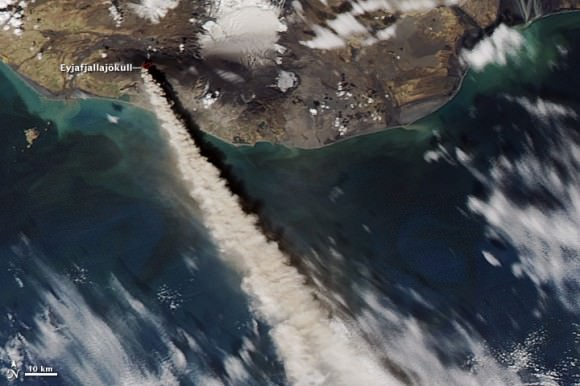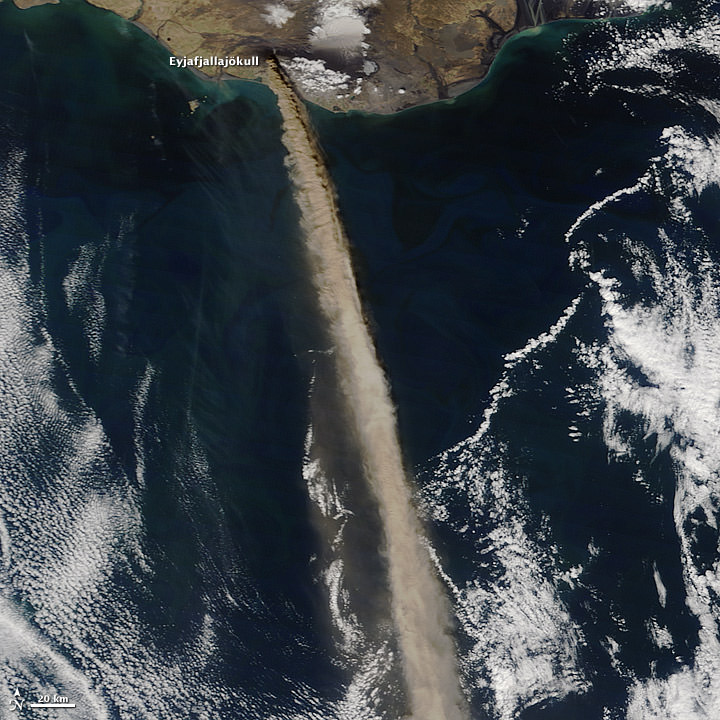[/caption]
Iceland’s Eyjafjallajökull Volcano continues to spew out a thick plume of ash. Seen here on May 11, 2010, the ash was streaming almost directly south, visibly extending at least 860 kilometers (530 miles) from Eyjafjallajökull. According to the NASA’s Earth Observatory website and the London Volcanic Ash Advisory Center, the ash reached altitudes of 14,000 to 17,000 feet (4,300 to 5,200 meters). CNN reported that some Spanish and Moroccan airports were closed at the time. On May 10th, the Icelandic Met Office reported continuous ash fall south of the volcano, with as depths reaching 2-3 millimeters (roughly 0.1 inches). “Presently there are no indications that the eruption is about to end,” the Met Office said yesterday.
Astronomer Snaevarr Gudmundsson from Iceland who shared his amazing close-up images of the volcano a few weeks ago, sent an update on how Iceland is coping with continued eruption.
“By now ash has covered all surface snow and ice so the mountains looks quite different from the photographs what I mailed to you,” he said. “The eruption is affecting people in a small village southeast of Eyjafjallajokull, named Vik. There it is stopping normal life of people. They are leaving their homes and elementary school is forced to shut down, only because of the fine grained ash. But the people are not in a threat of anything serious like pyroclastic flow or poisoned gases.”
Gudmundsson said he would be venturing out for the next few days to try and take more images of the volcano, and will send us another update soon.
Here is another satellite image, of the Iceland volcano taken by Moderate Resolution Imaging Spectroradiometer (MODIS) on NASA’s Aqua satellite on May 10, 2010.

Source: NASA Earth Observatory


I wonder how much pollution is being spewed out contributing to Global Warming…
I wonder how much the dust clouds are causing the Earth to cool.
I hope this is not the start of a super-volcano eruption then we don’t have to worry about global warming anymore we have to worry about the imminent ice age !
Might be interesting to see if this eruption hefts enough aerosols into the stratosphere to affect the brightness of this years lunar eclipses, especially the December total eclipse visible from S. and N. America? Probably not as dark as those after the eruption of Pinatubo, but some coloration effects may be possible.